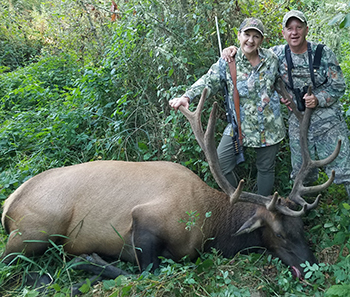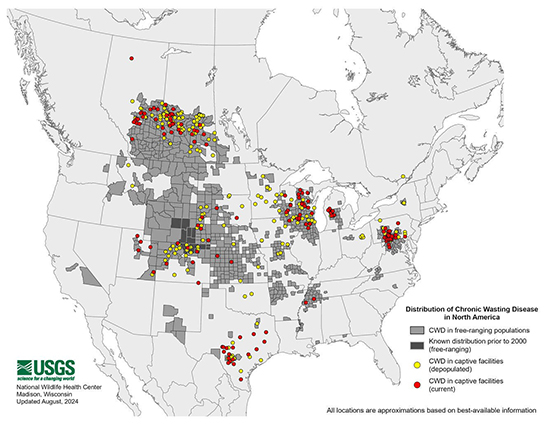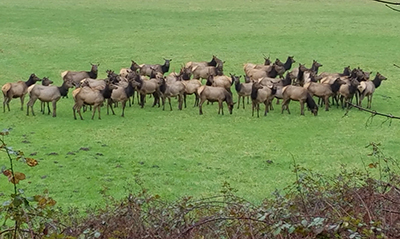Alaska Fish & Wildlife News
October 2024
Keeping Chronic Wasting Disease out of Alaska

Alaska offers outstanding big game hunting opportunities, but Alaskans also enjoy hunting out of state. It might be a chance to hunt whitetails with family in the Midwest, or take a horseback trip for elk in the West.
Unfortunately, Chronic Wasting Disease (CWD) is present in deer and elk in both those regions. CWD is a fatal neurological disease that can be unintentionally brought to Alaska by hunters bringing home CWD-positive tissue or carcasses. CWD has been detected in 35 states in the continental U.S. and in four Canadian provinces.
Alaska hunters planning out-of-state big game hunts should familiarize themselves with carcass disposal and transport regulations in the states where they will be hunting deer, elk or moose.
“The Alaska Department of Fish and Game cares about the future of healthy moose, deer and elk populations,” said Dr. Kimberlee Beckmen, the department’s wildlife health and veterinary services program manager. “CWD has not been detected in Alaska, but our caribou, moose, deer, elk and reindeer are at risk. Proper carcass transport and disposal will keep infectious prions out of our state and help to keep our herds healthy, as well as those in other states.”

Prions are proteins, and CWD prions can spread the disease through fluids and tissue, and contaminated soil, food or water.
Regulations prohibit the transport of “at risk” materials through Canada and into Alaska. No whole carcasses or any portion of the spinal column or a skull with brain tissue are allowed. To bring hunter-harvested cervid meat through Canada into the U.S. travelers must present the U.S. Customs and Border Protection officer with evidence that the product is cervid meat, such as a valid hunting license, commercially prepared labels on unopened packages, or other official documents. Cervid refers to members of the deer family.
Proper disposal of unwanted carcass parts in landfills is important. It reduces the risk of unintentional transmission of CWD prions to susceptible wildlife from CWD-positive areas to areas where the disease is not yet known to exist. Research shows that prions can remain infectious in the environment for 16-plus years. This complicates CWD management because there is no known, practical way to destroy prions in the environment.
To help ensure that CWD doesn't spread to Alaska, take the following precautions when hunting outside of Alaska:
- Do not harvest, handle or consume wild animals that appear to be sick.
- Wear rubber gloves while field dressing carcasses.
- Minimize handling of brain and spinal tissues. Wash hands and tools thoroughly afterwards with warm, soapy water then disinfect tools with bleach diluted 1:10 in water.
- Bone out carcasses. The meat is safe but discard the brain, spinal cord, eyes, spleen and lymph nodes and other inedibles in the appropriate location where the animal was harvested.
- Skulls and antlers should be cleaned of all brain matter prior to transportation.
- Do NOT bring unprocessed carcasses or heads from deer, elk or moose into Alaska.
For more information and resources for hunters

Information and Resources for hunters traveling across state lines
Transporting meat through Canada
Subscribe to be notified about new issues
Receive a monthly notice about new issues and articles.
